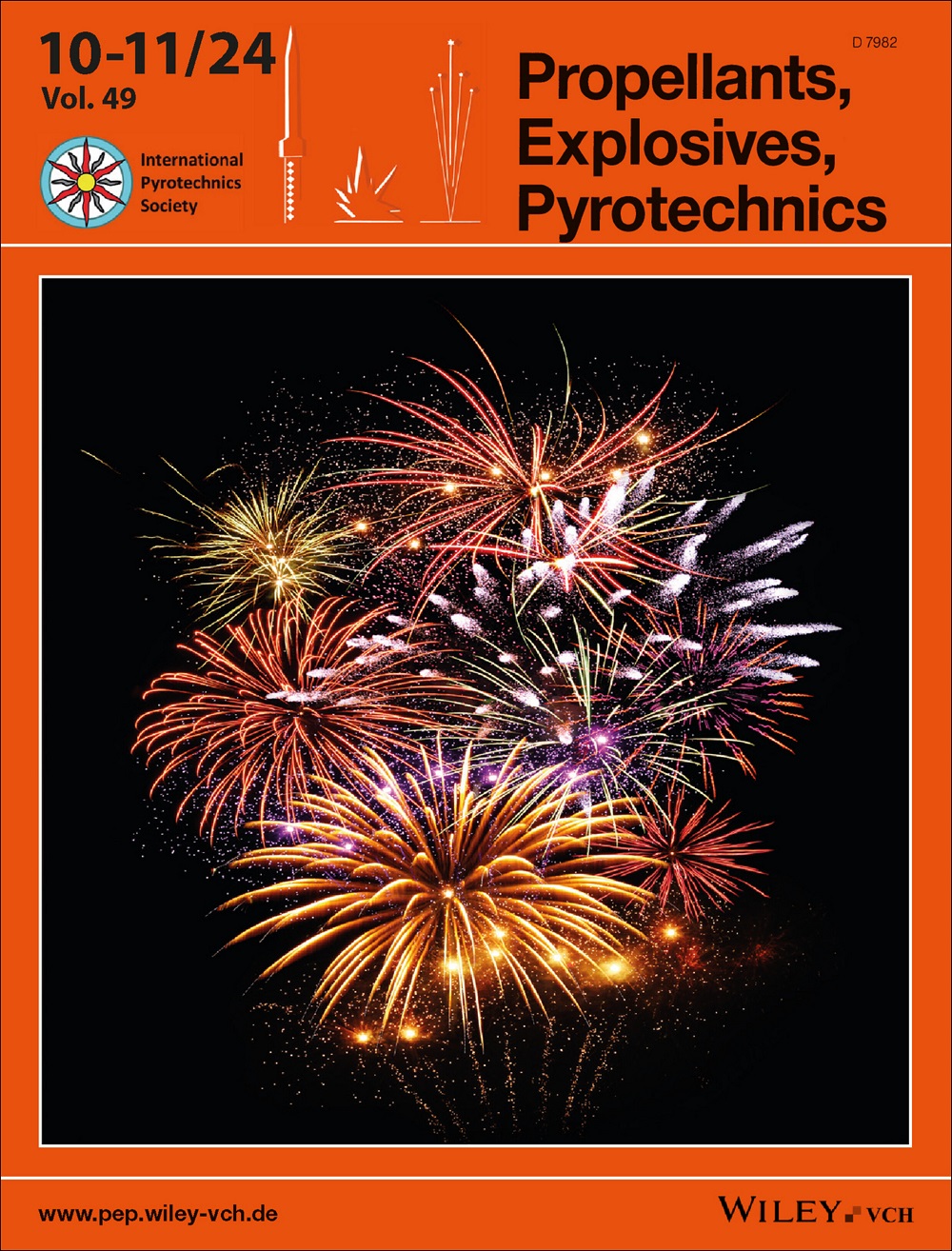二碳酸的三硝基乙基酰肼--含氧量和含氮量高的高能化合物
IF 2
4区 工程技术
Q3 CHEMISTRY, APPLIED
引用次数: 0
摘要
由于毒性或其他缺点,目前使用的许多高能材料需要用新的化合物来替代。其中,氧化剂高氯酸铵常用于固态推进剂,其本身及其燃烧产物会带来健康和环境问题。本文介绍了三种含有三硝基乙基的新型多硝基高能化合物。从丙二酸乙酯、二乙醇酸和二氨基二乙酸等容易获得的起始材料开始,通过简单直接的合成,首先获得了相应的酰肼,随后又获得了三硝基乙基酰肼,而且产量高、纯度高。这些化合物的氧平衡为正(假设形成了一氧化碳),氧和氮含量高,密度适中。通过核磁共振光谱、振动分析和元素分析对这些化合物进行了全面鉴定。通过使用高斯程序包,计算了形成热,并利用 EXPLO5 计算机代码估算了能量参数。本文章由计算机程序翻译,如有差异,请以英文原文为准。
Trinitroethyl hydrazides of dicarbonic acids – Energetic compounds with high oxygen and nitrogen content
Many currently used energetic materials need to be replaced with new compounds due to toxicity or other drawbacks. Among these is the oxidizer ammonium perchlorate, often used in solid state propellants, which itself, as well as its combustion products, poses health and environmental issues. Herein, three new polynitro energetic compounds are presented containing trinitroethyl moieties. Starting from easily available starting materials, such as malonic acid ethylester, diglycolic and diaminodiacetic acid, simple and straightforward syntheses were performed to obtain first the corresponding hydrazides and subsequently the trinitroethyl hydrazides in good yields and high purity. These compounds have a positive oxygen balance (assuming to the formation of CO), a high oxygen and nitrogen content and moderate densities. Full characterization was performed by NMR spectroscopy, vibrational analysis and elemental analysis. By using the Gaussian program package, the heats of formation were calculated and the energetic parameters were estimated utilizing the EXPLO5 computer code.
求助全文
通过发布文献求助,成功后即可免费获取论文全文。
去求助
来源期刊

Propellants, Explosives, Pyrotechnics
工程技术-工程:化工
CiteScore
4.20
自引率
16.70%
发文量
235
审稿时长
2.7 months
期刊介绍:
Propellants, Explosives, Pyrotechnics (PEP) is an international, peer-reviewed journal containing Full Papers, Short Communications, critical Reviews, as well as details of forthcoming meetings and book reviews concerned with the research, development and production in relation to propellants, explosives, and pyrotechnics for all applications. Being the official journal of the International Pyrotechnics Society, PEP is a vital medium and the state-of-the-art forum for the exchange of science and technology in energetic materials. PEP is published 12 times a year.
PEP is devoted to advancing the science, technology and engineering elements in the storage and manipulation of chemical energy, specifically in propellants, explosives and pyrotechnics. Articles should provide scientific context, articulate impact, and be generally applicable to the energetic materials and wider scientific community. PEP is not a defense journal and does not feature the weaponization of materials and related systems or include information that would aid in the development or utilization of improvised explosive systems, e.g., synthesis routes to terrorist explosives.
 求助内容:
求助内容: 应助结果提醒方式:
应助结果提醒方式:


